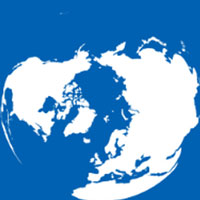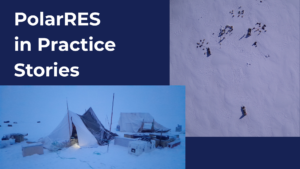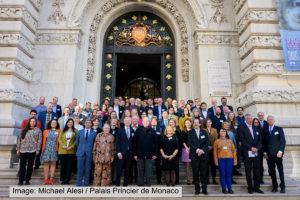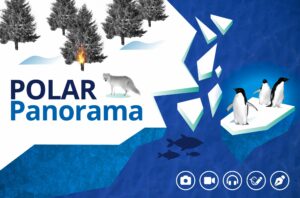
Arctic
Warming up faster than the rest of the world due to climate change, the Arctic region is becoming increasingly vulnerable to major disruptions in its finely balanced eco-, climate, and physical systems.
The Arctic region, located at the northernmost point on our planet, has warmed more than twice as fast as the rest of the globe since the 1970s, a phenomenon called ‘Arctic amplification’.
Arctic warming is expected to accelerate in the coming decades, posing considerable social, economic, and environmental challenges locally and globally. Drastic changes in the state of the Arctic are already happening: most noticeably, sea-ice cover has shrunk by more than 40% since 1979, while evidence suggests a poleward migration of terrestrial and marine biomes in the past decades. The damages to the Arctic system from warming could lead to considerable social, economic, and environmental costs if contributions under the Paris Agreement are not implemented.
This enhanced warming is driven by a number of physical processes, some of which are poorly represented in the current generation of climate models. Climate models are the main tool to predict climate change. Climate models predict climate change based on fundamental laws of physics dictating changes in the state of the Earth System (e.g. atmosphere and ocean) combined with semi-empirical representations of processes lacking a comprehensive understanding (e.g. sea ice or cloud formation).
PolarRES seeks to better understand the societal and ecological impact of climate change in the Arctic, and most particularly, the foreseen increase in boreal forest fires, permafrost thaw, trans-arctic shipping routes, and marine ecosystems. This relies on finding realistic and plausible projections of climate change. Using the storyline framework, PolarRES will leverage information from a large ensemble of climate projections to provide 4 climate predictions for the Arctic regions, representative of the possible realisations of climate change in the region. This will allow stakeholders to quantify the possible range of climate risks associated with global warming, using only a few climate projections.
Storylines
Using an established methodology, we produced 4 climate change storylines, representative of the range of possible climate change for the Arctic regions in boreal summer between the last 30 years of the ‘historical period’ (1985-2014) and the last 30 years of our century (2070-2099): ArcAmp- / BKWarm+ (storyline A), ArcAmp+ / BKWarm+ (storyline B), ArcAmp- / BKWarm- (storyline C), ArcAmp+ / BKWarm- (storyline D). The names of those storylines are based on 2 climate indices central to climate variability in the Arctic: the warming of the lower troposphere (“ArcAmp”) and the warming of the Barents-Kara sea (“BKWarm”). ArcAmp and BKWarm are found to explain a large fraction of the model spread in climate change projections in the Arctic, and can also be linked to climate change beyond the Arctic regions (by means of long-range teleconnections). We focus on climate changes in boreal summer, due to the greater relevance of this season to human activities and ecosystems.
The +/- indicates a deviation from the average projection, which we define as the multi-model mean (MMM): for instance, ArcAmp+ / BKWarm+ indicates a scenario when both the Barents-Kara sea warming and lower tropospheric warming are warmer than the average projection. Our four storylines define an envelope of possible climate projections for the Arctic, and thus provide a more comprehensive understanding of climate change’s risks / benefits than just looking at a single or an average projection.
Overall, all storylines share common features such as a strong surface warming, an increase in precipitation rates, a poleward shift of the storm tracks, and extensive sea-ice loss. However, they also show stark differences in the magnitude and pattern of these changes. For instance, the rate of warming can differ considerably between marine and terrestrial areas, revealing a large range of possible change in land-sea contrast due to climate change. Likewise, precipitation rates can vary drastically over certain areas of the Northern hemisphere between storylines; for instance, Scandinavia may become either drier or wetter due to global warming, depending on the amplitude of the Barents-Kara sea warming.
Physical changes associated with each storyline (e.g. surface temperature or precipitation) inform us on climate risks such as fires and permafrost thaw. Current work is aiming to downscale (WP2/3) and analyse some of these storylines to assess changes in climate risks (WP6).



